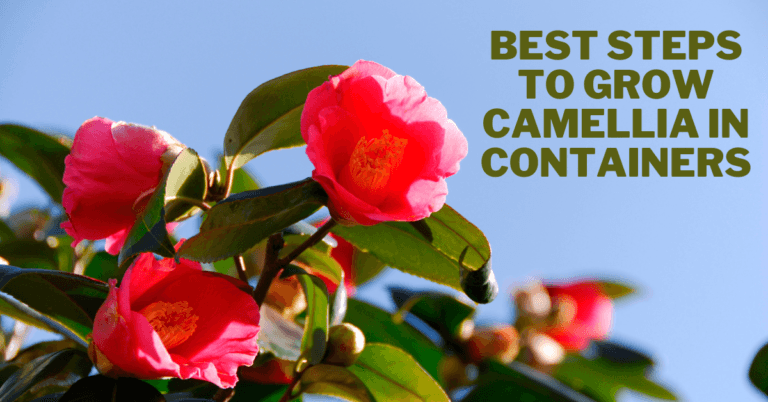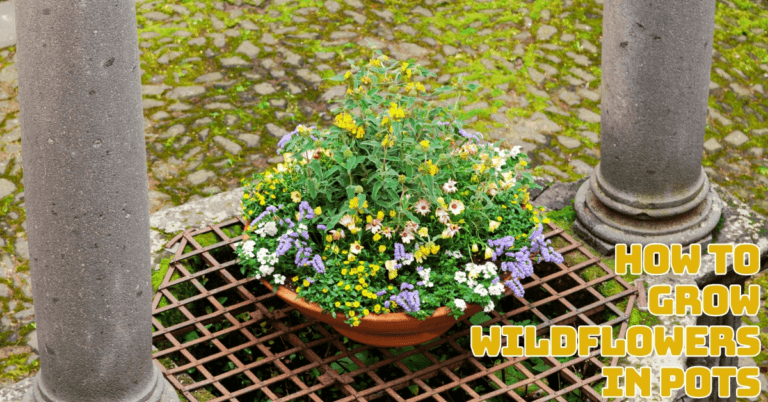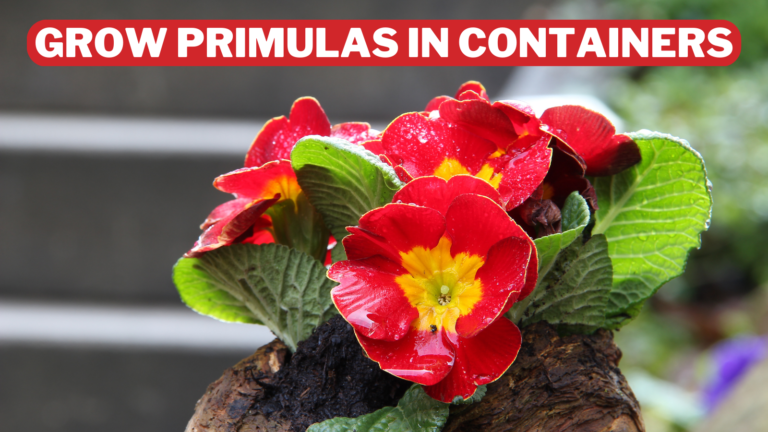Best Steps To Grow Verbascum In Containers
Best Steps To Grow Verbascum In Containers
Verbascum is a lovely perennial or biennial that blooms throughout the summer. They provide a planting design height and structure with their characteristic erect flower spires.
Although larger mullein, our domesticated Verbascum, is frequently seen in the wild, garden cultivars are easily accessible and flower in various colours, including white, yellow, orange, blue, and purple.
Verbascum complements other summer perennials and grasses beautifully, and although being a classic cottage garden favourite, it also works well in modern planting arrangements.
Containers are also a good fit for shorter varieties. Animals like bees, hoverflies, and moths benefit from Verbascum. The blog will help you to grow Verbascum in containers ideally.
History & Origin Of Verbascum
They are rarely annuals or subshrubs and can reach heights of 0.5 to 3.0 m (1.6 to 9.8 ft).
The plants initially develop a thick rosette of leaves at ground level before putting up a long stalk with flowers. In biennial plants, the stem grows the following season after the rosette in the first year.
The leaves are spiral-shaped and frequently densely hairy; in certain species, they are glabrous (hairless).
The flowers feature five symmetrical petals, which can be yellow (the most frequent colour), orange, red-brown, purple, blue, or white, depending on the species. The fruit is a capsule filled with countless tiny seeds.
Using the genus' plants as herbal treatments dates back many years. Native Americans employed the ground seeds of V. thaspus as a paralytic fish poison because of its high rotenone content, even though this plant is a recent introduction to North America.
Verbascum flowers have been used in traditional Austrian medicine to treat ailments of the respiratory tract, skin, veins, gastrointestinal tract, and locomotor system either internally (as tea) or topically (as an ointment, tea, baths, or compresses).
The origins of Verbascum thapsus are throughout Asia and Europe. It was presumably brought to North America on multiple occasions as a herb for medicine.
It expanded quickly after being brought to Virginia in the middle of the 1700s as a piscicide (fish poison).
It quickly established itself to the point where an 1818 flora of the East Coast referred to it as a native plant.
It had reached Michigan by 1839, and by 1876, it had established itself widely along the Pacific Coast.
V. thapsus has been used as a nodyne pectoral and treatment for coughs and diarrhea from the dawn. When smoked, the leaves might have stimulant properties.
Aristotle noted mullein as a fish toxin. The plant's methanol extract is beneficial against mosquito larvae.
In North America, mullein is found in abandoned pastures, fence rows, roadside ditches, and industrial locations.
It grows in regions where the growing season lasts at least 140 days, and the mean annual precipitation is 50 to 150 cm.
Although mullein is prevalent in England's chalk and limestone regions, dry sandy soils are favoured.
In Canada, it thrives in pastures with well-drained soils and a pH of 6.5 to 7.8, though it is not just restricted to those areas.
Mullein is easily outcompeted in places with a thick vegetation cover, yet it proliferates in disturbed soils.
Mullein has a slow rate of diffusion. So, the existence of latent seeds in the soil is mostly responsible for the plant's development in a particular area.
In undeveloped places, it is a transient plant that eventually makes way for other types of flora.
Types Of Verbascum
To grow Verbascum in containers, you should know about the best varieties. Here, I've added the most popular types.
1. Verbascum Creticum
This amazing biennial Verbascum self-seeds, sending up spires of green leaves and enormous (2in/5cm) fragrant gold blooms with a center black bee.
The optimal conditions for this mullein are full sun, light, and well-drained neutral to alkaline soil.
After the plant has completed flowering, leave the wasted seed heads on it to allow it to self-sow and produce additional free plants.
2. Verbascum Showy
Showy mullein grows well in the garden or when planted in various containers. It features a low rosette of deep-green, crinkly leaves.
From late spring to midsummer, the purple mullein (Verbascum phoenicium) “Southern Charm” mix produces blooms in various hues, including light pink, white, and purple. In USDA plant hardiness zones 4 through 9, it can reach heights of 23 to 47 inches.
“Southern Charm” mix blooms on arching spikes from late spring to late summer in various hues, including salmon, creamy-yellow, and lilac. In USDA zones 5 through 10, it reaches 23 to 35 inches.
3. Verbascum Roripifolium
This uncommon Greek biennial produces a lightweight, delicate cloud of lemon-yellow blooms on fragile stems, unlike the typical Verbascum, which grows in dense spires.
This airy Verbascum blooms in the summer and fall and has a “see-through” characteristic that makes it perfect for layering amid different kinds of decorative grasses. Allow it to self-seed in the sun or partial shade on well-drained soil.
4. Verbascum Gainsborough
This perennial form features rosettes of gray-green leaf rosettes over candles of yellow primrose flowers. Put it in the summer border in the center of other plants that are good for bees.
Because it is sterile, this Verbascum variety will not self-seed. It will last a few years in the sun and well-drained soil before needing to be renewed.
Purchase fresh plants when right, or grow your own from root cuttings.
5. Verbascum Jackie
‘Jackie' is a short, fashionable, and compact mullein that blooms in the summer with spires of peach-pink flowers.
It is cultivated as a short-lived perennial plant and is a hybrid of Verulamium dumulosum and Verulamium phoeniceum.
Purchase young plants raised from root cuttings from a reliable vendor. After that, plant in the sun- and well-drained soil.
6. Verbascum Helen Johnson
You will get the stunning perennial variety at Royal Botanic Gardens Kew(opens in a new tab). It has a rosette of wrinkled gray-green leaves and lovely pink-copper flower spikes that bloom throughout the summer. It is a beautiful addition to both modern and country garden designs.
Grow Verbascum In Containers
Mullein, also known as Verbascum, has spire-like flower stalks covered with tiny blooms. These flowers have a short, tubular base and five spreading petals.
Most species have hairy or woolly leaves produced in a sizable rosette at the plant's base.
Summer is when Verbascum flowers bloom. The tallness of Verbascum ranges from 1 to 6 feet (1.8m).
Mulleins that are taller create stunning vertical accents. Typically, flowers are yellow but can also be purple, crimson, brownish-red, or even white.
Verbascum can be weedy and self-sows. In hot, humid areas, perennial species have limited lifespans. Deep-rooted Verbascum thrives best when left alone after being planted.
Choose The Right Container
Make wise positioning decisions because your outside potted plants will require more water than their in-ground equivalents.
Select drought-tolerant plants, such as succulents, for secluded areas. Place the thirstier plants closest to a water supply if you have any.
For the first week after planting, check the soil moisture in your pots daily to determine how frequently to irrigate.
These bright plants are a staple for front porch planters and bloom from spring through summer with fertilizer and deadheading (pinch off spent blooms).
Even though they enjoy the sun, they prefer some cover in the hot afternoons. Find out how to winterize geraniums in pots.
Soil To Grow Verbascum In Containers
Mullein can be grown in almost any soil but prefers dry, slightly alkaline soil. Additionally, the plant may adapt to calcareous, poor soil.
It may spread swiftly and form dense patches faster than certain natural plants because of its extreme adaptability.
Grow Verbascum From Seeds
- Before germination, seeds must go through a stratification process. For this, stratify your mullein seeds in the refrigerator for at least four weeks before sowing them indoors.
- To reduce the chance of infection, use an airtight container. As long as your existing plants are not the sterile perennial kind, the biennial mullein will easily self-sow, and you can collect the seeds from your existing plants.
- Six to eight weeks before the final frost, start seedlings indoors. Given that the weather can occasionally be against us, this isn't easy to gauge. Work backward 6–8 weeks from your desired planting date, the last week of April. Keep them inside if the worst happens and there is still snow.
- Keep them indoors for a little longer if the worst happens and there is still snow.
- The taproot of mullein will begin to expand first. Use biodegradable pots that don't include peat to prevent upsetting new roots. Place one seed in each container before giving them a good soak in water. Next, scatter your seed on top. Sunshine is necessary for mullein to sprout.
- Keep your seedlings covered and in a well-lit area. Avoid draughts at all costs, and placing pots on a windowsill above a radiator is acceptable as long as a clear plastic bag covers them.
- Mullein germinates in about two weeks, though it might happen sooner if your home is warmer. Although seeds often have decent germination rates, you can always put two seeds in each container and remove the weaker ones.
- Your mullein seedlings should be big enough to plant outside in around 4-6 weeks after germination.
- Mullein doesn't particularly care about the soil. When we imagine gridlock on the highway, we frequently see a chalky bank with many mullein plants climbing up into intriguing spikes. All that is needed is drainage. This makes Verbascum the ideal plant for troubled areas! We do not water our mullein once it has been sowed; instead, we put it near the back of a border that receives direct sunlight.
- Plant your seedlings by the mature mullein's height and spread, reaching ten and two feet, respectively. You may want to put your seeds closer to a mature tree or a wall to protect them from the wind's fury as we plant near the back of our boundary.
- Mullein seeds can be sown directly. This requires that you use the same spot as before but space the seeds about 12 inches apart. Since they will be sown directly on top of the ground, they may take longer to germinate, and you may need to protect them from birds. After germination, around 8 weeks later, thin them.
Location
Verbascum is native to regions with bright skies and well-drained soil. They require neutral to alkaline soil in a dry, sunny garden location. Verbascum can survive in partial shade as long as the surroundings are dry.
Water
Once it has developed a large taproot, mullein is drought tolerant. It will serve as both a support for the large flowering spikes and a water source during the driest months.
If you observe the foliage beginning to droop, you may wish to water it if you planted it under an established tree.
Most likely, a good mulch around the plant's base will prevent excessive evaporation, and it will survive without any assistance from us.
Fertilizer
A plant may need nitrogen if its mature leaves turn light green to yellow. A plant may exhibit chlorosis—delicate green leaves with dark green veins—as a warning that it requires potassium.
There may be a phosphorus deficiency if elder leaves turn purple at the base and other leaves are dull and dark green.
A fertilizer with a high nitrogen content, such as lettuce and Swiss chard, is a wise choice for leafy plants grown in containers.
Blood meal, feather meal, and liquid fish emulsion are natural sources of this vitamin.
Mullein doesn't require feeding, and its long taproot may reach deeper levels of the soil to absorb the nutrients there.
As a result, you may confidently add mulch to your plant to help it retain moisture and prevent weed growth.
The nutritional value of your mulch is important, but perhaps you shouldn't worry about it too much.
Materials like grass clippings, straws, or even bark chips will work. Keep your fenugreek, borage, and comfrey mulches for other plants that require them.
Propagating
The orange-brown Verbascum variety “Helen Johnson” is one of those Verbascum with sterile flowers that do not set seeds.
Although you will need to pull up the plant, you must reproduce these clean forms from root cuttings taken in the first few weeks of winter.
Look for strong, thick roots, remove one or two, and then replant the Verbascum.
Cut the root into parts between 1 and 2 cm long, place them in a tray with grit, and nearly fill the tray to the top (half an inch).
Place them in the compost top-down and bottom-up, and allow them to root. The root cuttings should have some leaves by early summer when the miniature plants can be potted. However, as they can occur, patience is needed.
Pruning
Mullein plants are biannual; thus, their second year of growth is when they flower. The plant will develop an elegant rosette of leaves during its first year.
It will sprout its distinctive long stalk of flowers in the second year. Instead of opening all at once, these flowers open one at a time, moving upward from the stem's base.
When roughly half of these flowers have opened, it is preferable to deadhead. You won't receive as many blooms, but you'll get a whole new batch of flower stalks.
Furthermore, the one you take out will look lovely in a floral arrangement. Leave the rosette alone and trim the stem just above the ground.
Replace it with multiple shorter stems. Remove these secondary stalks after blooming to stop them from setting seed and preventing self-sowing.
Pests & Diseases Of Verbascum
Not to minimize the catastrophic impact aphids can have on plants, but they don't seem to enjoy the velvety fur of the mullein leaves.
The aphids will consider young tips shooting through the fair game, but they appear to have had enough to move on.
Clip the aphids off, or spray them with your hose if you notice any new growth. A high-pressure jet is effective. Alternatively, keep them on and wait for the ladybirds to arrive and enjoy a quick meal.
Overwatering can be a concern when this occurs to well-intentioned gardeners on occasion.
Remember that they appreciate dry soil and try not to water them too frequently in the evening.
Mullein is often planted toward the back of borders; a plant with a height of 6 to 10 feet would be challenging to position in the middle of a busy border. As a result, this is quite easy to accomplish.
Conclusion
A tasty beverage called mullein (Verbascum thapsus) tea has been used for centuries to treat many illnesses, such as asthma, recurrent colds, and chronic coughs.
The common mullein (Verbascum thapsus), a flowering plant indigenous to Europe, Africa, and Asia, is used to make it. It has a rich, aromatic flavour.
You may try the Verbascum tea to get a different flavour and let us know how it was.
I trust you enjoyed this article on the Best Steps To Grow Verbascum In Containers. Please stay tuned for more blog posts to come shortly. Take care!
JeannetteZ
>>>Please click here to read my all-inclusive article about Container Gardening<<<
>>>Are you interested in homegrown herbs and medicine? Please click here to find out more about it!<<<
Your Opinion Is Important To Me
Thoughts? Ideas? Questions? I would love to hear from you. Please leave me your questions, experience, and remarks about this article about the Best Steps To Grow Verbascum In Containers in the comments section below. You can also reach me by email at Jeannette@Close-To-Nature.org.
Disclosure
This post may contain affiliate links. As an Amazon Associate and other affiliate programs, I earn from qualifying purchases at no extra cost to you. Read my full affiliate disclosure.
You might also enjoy these blog posts:
Best Steps To Grow Monarda In Containers
Best Steps To Grow Lollipops In Containers
What Is The Difference Between Stress And Depression
Best Steps To Grow Verbena In Containers





















